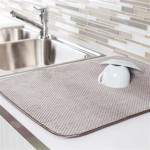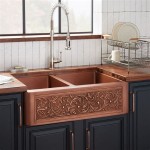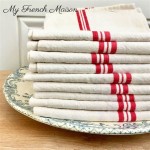Understanding Kitchen Knife Sharpening Stones
A kitchen knife sharpening stone, also known as a whetstone, is a crucial tool for maintaining the sharpness and performance of kitchen knives. A dull knife is not only frustrating to use but also more dangerous, requiring more force and increasing the likelihood of slips. A sharpening stone, when used correctly, restores the knife's edge to its optimal sharpness, making food preparation safer and more efficient. This article provides a comprehensive overview of kitchen knife sharpening stones, covering their types, grit ratings, maintenance, and usage.
The primary function of a sharpening stone is to abrade the metal of the knife blade, removing microscopic imperfections and realigning the edge to create a sharp, consistent cutting surface. This process involves using the stone's abrasive particles to grind away small amounts of steel, forming a new, precise edge. The effectiveness of a sharpening stone depends on several factors, including the stone's material, grit rating, and the user's technique.
Types of Sharpening Stones
Sharpening stones are broadly classified into several types based on their material composition. Each type offers unique characteristics that affect its performance, durability, and suitability for different types of knives and sharpening needs. The most common types include water stones, oil stones, diamond stones, and ceramic stones.
Water Stones: Water stones, as the name suggests, require water as a lubricant during the sharpening process. They are typically made of synthetic materials and are known for their relatively fast cutting action. The water helps to carry away the swarf (metal particles removed during sharpening), preventing the stone from becoming clogged and ensuring a clean, efficient grinding process. Water stones are generally softer than oil stones, which means they wear down more quickly and require more frequent flattening. However, their ability to quickly sharpen a blade makes them a popular choice among professional chefs and serious home cooks.
Water stones come in various grit ratings, ranging from coarse stones used for repairing damaged edges to fine stones used for honing and polishing. Some popular brands of water stones include King, Shapton, and Suehiro. When using a water stone, it is essential to keep the surface consistently wet throughout the sharpening process to maintain optimal performance and prevent damage to the stone.
Oil Stones: Oil stones utilize oil as a lubricant. These stones are typically made from natural materials like Arkansas stone or synthetic materials like aluminum oxide. Oil stones are generally harder and more durable than water stones, offering a slower but more controlled sharpening process. The oil acts similarly to water, carrying away swarf and preventing the stone from clogging. However, oil stones require a specific type of oil, typically mineral oil, which should not contain additives that could damage the stone or contaminate the knife blade.
Oil stones are known for their ability to produce a very fine, polished edge. They are often preferred for sharpening harder steels and for achieving a high level of sharpness. Arkansas stones, in particular, are prized for their fine grit and are often used for honing and finishing knife edges. Proper maintenance of oil stones includes regular cleaning to remove accumulated swarf and oil residue.
Diamond Stones: Diamond stones are constructed with diamond particles bonded to a metal plate. These stones are exceptionally hard and offer the fastest cutting action of all sharpening stone types. Diamond stones can sharpen even the hardest steels with relative ease. They are available in both continuous surface and interrupted surface designs. Continuous surface diamond stones provide a smooth, consistent sharpening surface, while interrupted surface stones have small gaps or holes that help to prevent clogging.
Diamond stones can be used with or without water as a lubricant, although using water is generally recommended to help carry away swarf and prolong the life of the stone. Diamond stones are known for their durability and long lifespan. However, they can be more aggressive than other types of stones and require a more careful and controlled sharpening technique to avoid damaging the knife blade.
Ceramic Stones: Ceramic stones are made from synthetic ceramic materials and offer a balance between the cutting speed of water stones and the durability of oil stones. They can be used with water or oil as a lubricant and are known for their ability to produce a very fine, polished edge. Ceramic stones are relatively easy to maintain and are resistant to clogging. They are a good choice for sharpening a wide range of knife steels and are often preferred by those seeking a versatile and long-lasting sharpening stone.
Ceramic stones are available in various grit ratings, allowing for both coarse sharpening and fine honing. Some ceramic stones are specifically designed for use with water, while others are intended for use with oil. It is important to follow the manufacturer's instructions regarding the appropriate lubricant to use with a particular ceramic stone.
Understanding Grit Ratings
Grit rating is a crucial characteristic of sharpening stones. It determines the coarseness or fineness of the abrasive particles on the stone's surface and dictates the stone's ability to remove material from the knife blade. Grit ratings are typically measured using a numerical scale, with lower numbers indicating coarser grits and higher numbers indicating finer grits. A coarser grit is used for repairing damaged edges or for quickly removing material, while a finer grit is used for honing and polishing the edge to achieve maximum sharpness.
The selection of the appropriate grit rating depends on the condition of the knife and the desired level of sharpness. A typical sharpening progression involves using a series of stones with progressively finer grits, starting with a coarse stone to establish the initial edge and finishing with a fine stone to refine and polish the edge.
Coarse Grit (100-400): Coarse grit stones are used for repairing damaged edges, such as chipped or severely dulled blades. These stones remove material quickly and are essential for reshaping the edge profile. They are not intended for regular sharpening and should only be used when the knife blade requires significant repair. Using a coarse grit stone too frequently can prematurely wear down the blade.
Medium Grit (600-1000): Medium grit stones are used for general sharpening and for refining the edge after using a coarse grit stone. These stones remove material at a moderate rate and are effective for establishing a consistent, sharp edge. They are suitable for knives that are moderately dull and require regular sharpening to maintain their performance.
Fine Grit (3000-8000): Fine grit stones are used for honing and polishing the edge to achieve maximum sharpness. These stones remove very little material and are primarily used to refine the edge left by a medium grit stone. They are essential for achieving a razor-sharp edge and for maintaining the sharpness of knives that are already in good condition. Fine grit stones are often used as the final step in a sharpening progression.
Ultra-Fine Grit (10000+): Ultra-fine grit stones are used for achieving an exceptionally polished edge. These stones are primarily used for aesthetic purposes and may not significantly improve the cutting performance of the knife. They are often used by enthusiasts and collectors who seek the highest level of sharpness and finish.
Sharpening Techniques and Maintenance
Proper sharpening technique is crucial for achieving optimal results with a sharpening stone. There are various techniques available, but the most common involves maintaining a consistent angle between the knife blade and the stone surface. This angle typically ranges from 15 to 20 degrees, depending on the type of knife and the desired edge profile. Maintaining a consistent angle is essential for creating a uniform edge and preventing damage to the blade.
Before sharpening, the stone should be properly prepared. Water stones should be soaked in water for a specified period, typically 5-10 minutes, until they are fully saturated. Oil stones should be lightly coated with oil. Diamond stones and ceramic stones may be used dry or with a small amount of water or oil, depending on the manufacturer's recommendations.
During sharpening, the knife blade is drawn across the stone's surface with a smooth, controlled motion. The blade should be drawn at the correct angle, and consistent pressure should be applied throughout the stroke. It is important to sharpen both sides of the blade equally to maintain a symmetrical edge. After each stroke, the blade should be inspected to ensure that it is making consistent contact with the stone.
After sharpening, the knife blade should be cleaned to remove any swarf or residue. The stone should also be cleaned to prevent clogging and maintain its performance. Water stones should be rinsed with water and allowed to air dry. Oil stones should be wiped clean with a cloth and may require occasional cleaning with a solvent to remove accumulated oil and swarf. Diamond stones and ceramic stones can be cleaned with water and a mild detergent.
Flattening is an essential aspect of sharpening stone maintenance. Over time, the surface of a sharpening stone can become uneven due to wear and tear. A flattening stone, also known as a lapping plate, is used to restore the stone's surface to a flat, even condition. Flattening is typically performed by rubbing the sharpening stone against the flattening stone with water or another lubricant. Regular flattening is essential for maintaining the stone's performance and ensuring consistent sharpening results.
Proper storage of sharpening stones is also important for maintaining their condition. Stones should be stored in a dry, cool place to prevent damage from moisture or temperature fluctuations. Water stones should be allowed to dry completely before being stored to prevent mold or mildew growth. Oil stones should be stored in a manner that prevents them from contaminating other items with oil.
:max_bytes(150000):strip_icc()/__opt__aboutcom__coeus__resources__content_migration__serious_eats__seriouseats.com__images__20100423-sharpening20-2004-aba6e6fa129844a7a106fa006eb98c3d.jpg?strip=all)
The Best Knife Sharpeners Of 2024 Tested Reviewed

How To Use A Whetstone Sharpen Knives Pro Tool Reviews

The Beginner S Guide To Whetstone Sharpening Ethan

How To Use A Sharpening Stone In 6 Easy Steps W

Choice 12 Coarse Medium Grit Carbonized Silicon Knife Sharpening Stone

How To Use A Sharpening Stone Knives
:max_bytes(150000):strip_icc()/__opt__aboutcom__coeus__resources__content_migration__serious_eats__seriouseats.com__images__20100423-sharpening20-2006-d448b29f1dfe45f6b0f50dc3dd6b58d2.jpg?strip=all)
How To Sharpen A Knife With Whetstone

Dn Knife Sharpener Stone Double Sided Fine Coarse Sharpening Kitchen

The Best Knife Sharpeners And How To Use Them

How To Use A Sharpening Stone In 6 Easy Steps W
Related Posts








